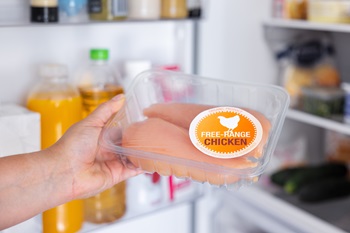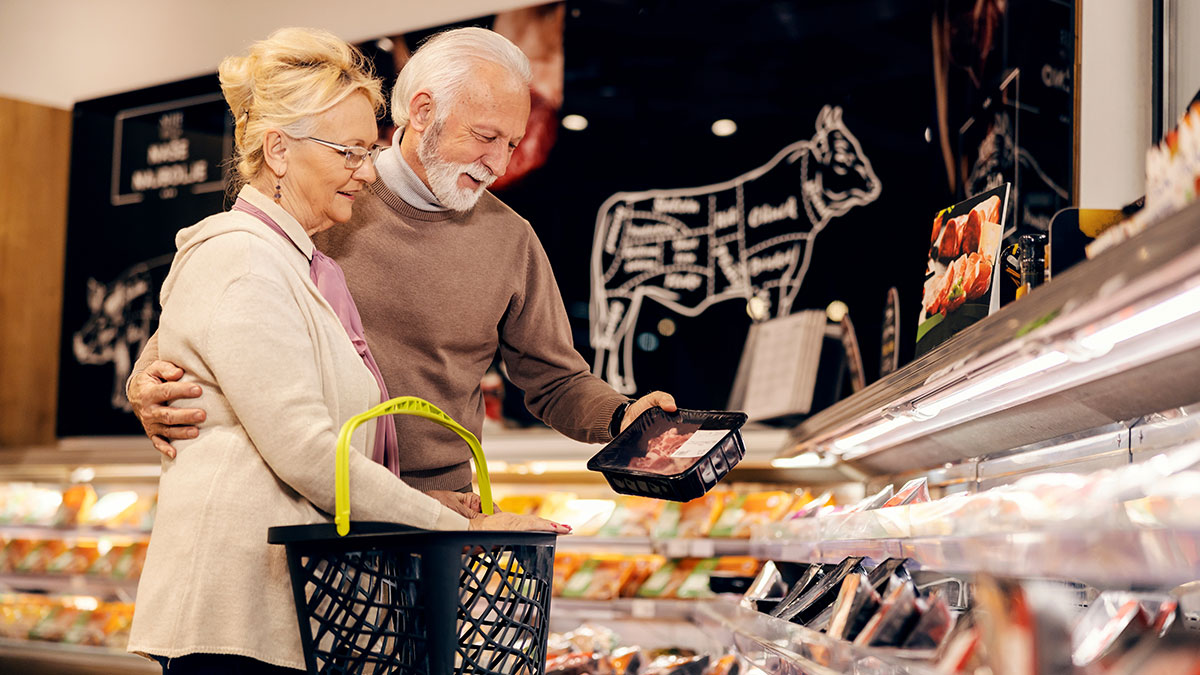By: Rick Stein, Vice President, Fresh Foods, FMI

Meat companies and retailers are increasingly thinking out of the box when it comes to protein packaging, both literally and figuratively. The evolution of retail meat packaging – from commodity-style foam trays with overwrap to case ready branded fresh meats to protein items across grocery categories – continues in today’s market, as food quality, safety, marketing and sustainability converge.
Among the facets of packaging, sustainability has increased as a priority. While meat companies and retailers are pursuing commitments to reducing their carbon footprint, consumers are eyeing packaging in a new way. In the Power of Meat 2023 research report, 52% of meat-eaters agree that they try to do their part for the environment, such as choosing sustainable food choices, recycling, etc." and "64% of flexitarians agree that they try to do their part for the environment by choosing more environmentally friendly options and recycling more.
Sustainability can look like a lot of things when it comes to packaging. Package waste is one concern: a shopper might be drawn to a product that seems to use minimal materials or think twice about a product in the case that includes a tray, film, outer board or other components. Many consumers are examining packages more carefully to check for recyclability.
Businesses and consumers are also taking steps to curb waste, and packaging for meat and poultry products reflects their concerns. For example, in addition to using less material, vacuum skin packaging and shrink bags for fresh meat use, allow for a longer shelf life, meaning that consumers have more time to keep and use that product. Other packaging elements that help reduce meat product waste include oxygen absorbers, modified atmosphere packaging and smaller pack sizes, have also emerged.
Examples of sustainable – or least more sustainable – packaging can be found across protein categories. In addition to options at the fresh meat case, food manufacturers and retailers can opt for eco-friendlier options for prepared foods, frozen foods and center store products that contain meat or poultry as ingredients. Even the supermarket staple of rotisserie chicken has gotten a green makeover, now inside a compostable bag instead of the standard clamshell or domed plastic container.
Heading into the mid-point of the 2020s, sustainability will become a table stake in protein packaging. To stay up to date on the latest innovations and applications, meat and poultry companies along with grocery operators, can take advantage of resources like the upcoming Annual Meat Conference (AMC) held at the Gaylord Opryland in Nashville 18-20, 2024.
A March 20th general session on “Sustainable Packaging and Policy Landscape – Where Are We Now & Where Are We Going?” will explore the current state of packaging in the meat industry and how efforts to minimize packaging and food waste are reverberating across the food chain. Experts will also delve into the latest regulatory topics and provide insights on the future of sustainable packaging and how the industry will balance cost and responsibility.
At AMC, attendees can also get a bigger picture view of sustainability priorities and initiatives across the industry. A breakout session on March 19, "Sustainability in the Meat Industry: Status Update, Solutions, and Success Stories”, will spotlight Protein PACT engagements, tools for continuous improvement, examples of successful sustainability practices and more.
To register and learn more about this year’s AMC event, visit meatconference.com


 Industry Topics address your specific area of expertise with resources, reports, events and more.
Industry Topics address your specific area of expertise with resources, reports, events and more.
 Our Research covers consumer behavior and retail operation benchmarks so you can make informed business decisions.
Our Research covers consumer behavior and retail operation benchmarks so you can make informed business decisions.
 Events and Education including online and in-person help you advance your food retail career.
Events and Education including online and in-person help you advance your food retail career.
 Food Safety training, resources and guidance that help you create a company food safety culture.
Food Safety training, resources and guidance that help you create a company food safety culture.
 Government Affairs work — federal and state — on the latest food industry policy, regulatory and legislative issues.
Government Affairs work — federal and state — on the latest food industry policy, regulatory and legislative issues.
 Get Involved. From industry awards to newsletters and committees, these resources help you take advantage of your membership.
Get Involved. From industry awards to newsletters and committees, these resources help you take advantage of your membership.
 Best practices, guidance documents, infographics, signage and more for the food industry on the COVID-19 pandemic.
Best practices, guidance documents, infographics, signage and more for the food industry on the COVID-19 pandemic.
